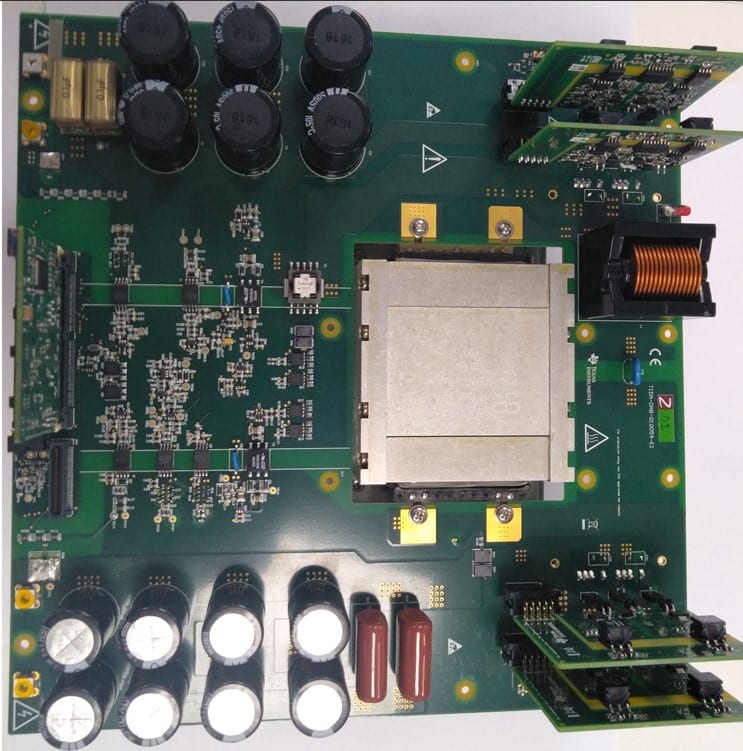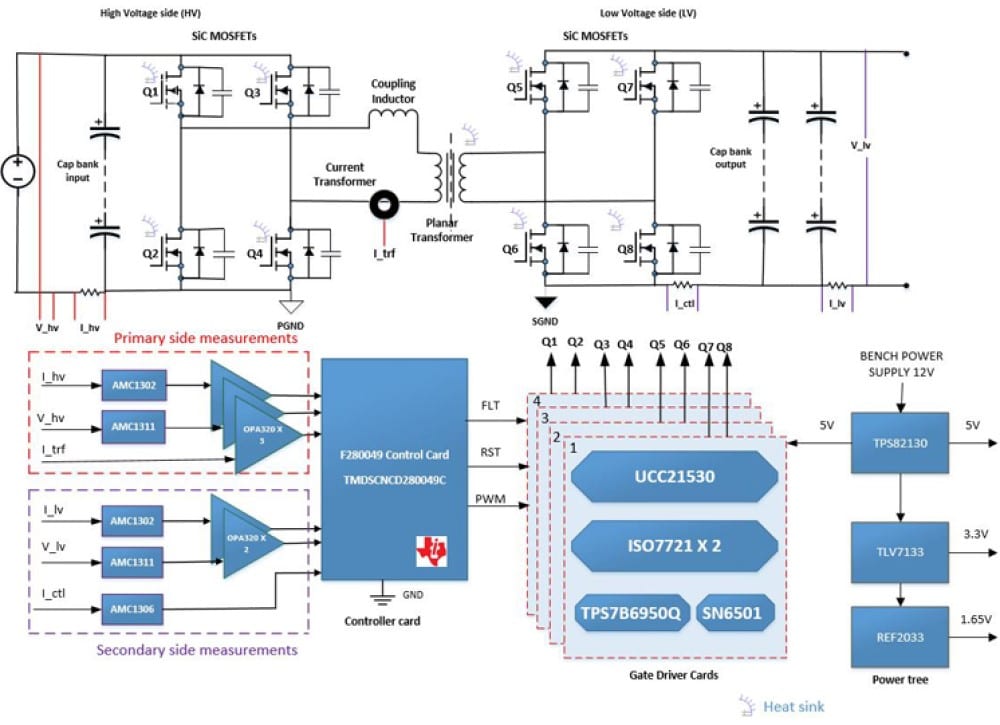Source:https://eepower.com/news/10kw-bi-directional-dual-active-bridge-reference-design-with-sic-mosfets/ Release time:2020/09/26Number of hits:3063
The TIDA-010054 reference design from Texas Instruments (TI) provides an overview on the implementation of a single-phase dual active bridge (DAB) dc-dc converter. DAB topology offers advantages like soft-switching commutations, a decreased number of devices and high efficiency. The design is beneficial where power density, cost, weight, galvanic isolation, high voltage conversion ratio and reliability are critical factors, making it suited for EV charging stations and energy storage applications.
Modularity and symmetrical structure in DAB allow for stacking converters to achieve high power throughput and facilitate a bidirectional mode of operation to support battery charging and discharging applications.
The dc-dc converter in EV charging stations and energy storage applications must be capable of interfacing seamlessly with Lithium-ion or a lead-acid battery. It must also be capable of providing the required voltage conversion between the high-voltage and low-voltage side and provide galvanic isolation between them.
You may also like: Nidec Announces In-Wheel Motor Prototype for Electric Vehicles
 TIDA-010054 Bi-directional, dual active bridge reference design for level 3 electric vehicle charging stations dual active bridge board.
TIDA-010054 Bi-directional, dual active bridge reference design for level 3 electric vehicle charging stations dual active bridge board.
Traditional switching devices have a limit on how quickly they can switch high voltages, or more appropriately, the dV/dt ability of the device. This slow ramping process increases switching loss because the device spends more time in switching transition. This increased switch time also increases the amount of dead time required in the control system to prevent shoot-through and shorts.
The solution to this has been developed in newer switching semiconductor technology such as SiC and GaN devices with high electron mobility. This reference design uses SiC MOSFETs alongside TI's SiC gate driver technology to demonstrate the potential benefits it translates when it comes to efficiency and power density.
 TIDA-010054 Bi-directional, dual active bridge reference design for level 3 electric vehicle charging stations gate driver board.
TIDA-010054 Bi-directional, dual active bridge reference design for level 3 electric vehicle charging stations gate driver board.
The following four popular topologies were considered for analysis.
LLC resonant converter
Phase-shifted, full bridge
Single-phase, dual-active bridge
Dual-active bridge in CLLC mode
Based on this study, the dual-active bridge was chosen for implementation in this reference design, owing to its ease of bidirectional operation, modular structure, competitive efficiency, and power density numbers with respect to other competing topologies. This reference design focuses on addressing the challenges when designing a high-power, dual-active-bridge dc-dc converter for the EV charging station.
 TIDA-010054 Bi-directional, dual active bridge reference design for level 3 electric vehicle charging stations block diagram. (click on diagram to enlarge)
TIDA-010054 Bi-directional, dual active bridge reference design for level 3 electric vehicle charging stations block diagram. (click on diagram to enlarge)
Single-phase-shift, DAB
Dual-channel UCC21530 with reinforced isolation used for driving SiC MOSFETs in the half-bridge configuration
TMS320F280049 controller for implementation of digital control
Isolated voltage and current sensing
Maximum power output of 10kW
Full load efficiency of 97.6% and a peak efficiency of 98.2% at 6kW
High-power density of 1.92kW/L
Primary voltage of 700- to 800-Vdc, secondary voltage of 380- to 500-Vdc
Two-level turnoff for short-circuit protection with adjustable current limit and delay (blanking) time
PWM switching frequency of 100kHz and reduced transformer size enabled by planar magnetics
Soft switching without auxiliary components